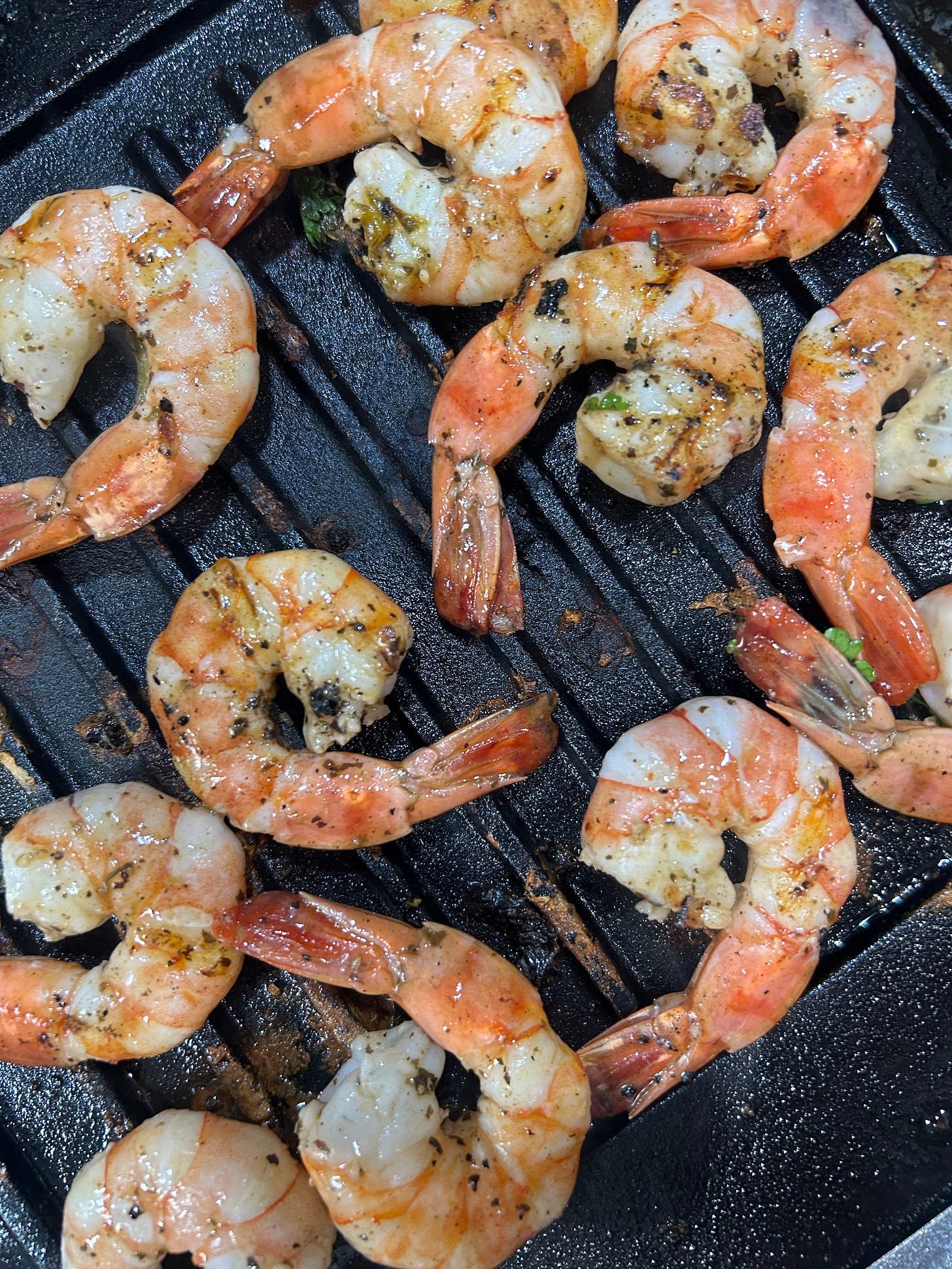The sauce that will fix all your problems.
Mostly kitchen crises, but never underestimate the power of a green sauce.
Overcooked chicken breast? Smother it in a green sauce. Faced with a flavorless filet of fish? Douse it in a green sauce. Tired of plain rice? Serve it with a green sauce. Need a new salad dressing? Green sauce. I could go on, and I will.
Nearly every culture and cuisine has its version of a go-to green sauce. Some are chunky, some are smooth, some are spicy and vinegary, and others are creamy and mild. Yet, all green sauces have one thing in common: they hold this magical ability to add a punch of freshness to any dreary dish. It’s in the name… “green.” Green instantly implies freshness, produce, herbs, and life. Think about it — Northern Africa has chermoula, India has chutney, Germany has Frankfurt green sauce, England has British mint sauce, Argentina and Latin America have chimichurri, France has persillade, Mexico has salsa verde, Italy has pesto, and even California—SF specifically—coined the “green goddess sauce.” A green sauce is a staple in bringing life into food.
I’ve even seen green sauce strut its stuff in the restaurant where I currently work. Typically, for “family meal”—the meal we all eat on our break before service starts—we cook chicken or pork or beef of some sort. More often than not, it’s simply roasted and served with plain rice, because the last thing we’re worried about is feeding ourselves something revolutionary. It’s satiating, it gets the job done, but it can be severely boring on its own. I’ve noticed that the best versions of it tend to be accompanied by an RGS (random green sauce), whipped up from all the leftover herb and vegetable scraps floating around the kitchen.
Moral of the story: a green sauce can turn a fine meal into a good one—or even a great one.
What kind of greens are we talking about?
There are countless varieties of green sauce, but here are a handful that I adore in my kitchen:
Persillade - Let’s start with the basics. Parsley, garlic, salt, and olive oil. It doesn’t get easier than this. Finely minced garlic, finely chopped parsley, salt to taste, and olive oil to make it a chunky yet drizzleable consistency. It’s fresh, it’s salty, it’s garlicky. It’s the oomph that your basic vegetable soup or rice desperately needs.
Gremolata - You can take a persillade one step further by grating a little bit of lemon zest into it. Now, it’s officially a Gremolata.
Pesto - Pesto typically includes herbs, pine nuts, salty cheese like parmesan, and olive oil, but if you ask me, it’s essentially a blank canvas. Play around with different nuts like walnuts, almonds, or pistachios. Omit cheese or try various kinds. Experiment with different herbs. Add garlic or don’t. Add peppers or don’t. Blend it until completely creamy or leave it a bit chunky.
Chimichurri - Some people feel strongly that chimichurri should always be hand-chopped. I say, if you want to use a food processor for it, go for it. Or sharpen your knife if you’re feeling funky. It goes like this: herbs, garlic, olive oil, sometimes capers, vinegar, or citrus juice. Done. See my chimichurri recipe below for more details.
Green Goddess Sauce - California’s very own. Essentially the same base as chimichurri, subbing vinegar with lemon or lime juice, and blending avocado and sometimes sour cream or yogurt, into it until everything is super smooth and creamy. It’s a salad dressing, it’s a dipping sauce, it’s whatever you want it to be.
Salsa verde — Tomatillos, onions, peppers, garlic, cilantro, and lime. Char the veg up first before blending or keep them as fresh as they were harvested.
Spanish-Style Salsa Verde - Also an Italian version, very similar to chimichurri, but often the herbs are not cut as fine as in chimichurri, the olive oil is a bit heavier, and chopped anchovies, olives, and capers find their home here. It’s briny, it’s funky, it’s salty—it’s delicious.
Chermoula - This North African sauce can act as a relish or as a marinade. It often contains preserved lemon, ginger, cilantro, garlic, and sometimes spices such as saffron or crushed red pepper.
Chutney - Mint is one of my favorite varieties when it comes to chutneys. For the most part, it’s mint, ginger, coriander/cilantro, spicy green chilis, garlic, lime, and sometimes peanuts. It’s bright and spicy, minty and a little sweet.
Let’s get real.
I know herbs and greens are not the most reasonable to always have on hand. They wilt and die quicker than other vegetables, but there are ways to preserve them!
A few weeks ago, I had a major surplus of herbs after cooking for a large event. I was at my parents’ house and didn’t want to leave them with more herbs than they had the time to utilize, so I blended them all up with olive oil and froze the mixtures into ice cubes. Now, whenever my mom needs a boost of herbaceousness, she can pop out an herb cube and turn it into a sauce, or stir it right into whatever she’s making.
Some ways you can utilize an RGS:
Marinate and roast a whole chicken in chermoula, and save some extra for dipping.
Amp up pan-fried white fish with a salty-briny Spanish-style salsa verde.
Make a Mexican-style salsa verde to add a punch of flavor to braised beef or pork tacos — then smother it on your eggs the next morning.
Drizzle a pesto over roasted vegetables. Roasted cauliflower and broccoli florets are good, but roasted cauliflower and broccoli florets dipped in a walnut grape leaf pesto are better!
Douse grilled shrimp in a garlicky, tangy, and bright chimichurri. Find the recipe below.
Elevate some stewed white beans by topping them with a quick persillade or salsa verde. One of my favorite ways to cook a simple can of white beans is by stewing them in chicken stock and a beer (I prefer an IPA over a lager—it adds a stronger bite and more flavor), maybe some onion and garlic if you have them on hand, and then topping them with an herb relish. You can keep it as simple as possible with just roughly chopped parsley, garlic, lemon, and oil, like a saucier gremolata. Or, you can add some spice, experiment with other herbs like basil, mint, chives, or tarragon, and maybe add malt vinegar to mingle with the hops from the beer.
Play with your greens.
With it being Spring and Summer hiding just around the corner, this is the perfect time to check out your local farmer’s markets for whatever greens you can find. A green sauce doesn’t have to be limited to herbs. Pack it with spinach, kale, mustard greens, collards, chard, garlic scapes/green garlic, scallions, spring onions, and green vegetables like cucumbers, bell peppers, tomatillos, and celery.
The world is your oyster when it comes to a green sauce. Hell, you can even throw a green sauce on an oyster.

Grilled Shrimp + Green Garlic, Spring Onion, and Sorrel Chimichurri
Yields 1 lb shrimp, roughly 21-25 pieces | Prep Time: 1 hour, 25 minutes | Cook Time: 5-8 minutes
Ingredients
1 lb. jumbo shrimp (typically 21—25), peeled and deveined with tails on
1/4 cup olive oil
Juice from 1 lemon
Herb scrap from the chimichurri recipe below (parsley stems, basil stems, oregano stems, onion/garlic scrap)
1 tsp. each kosher salt and freshly cracked black pepper
Chimichurri:
1 big or 2 small green garlic roots or garlic scapes (can sub with regular garlic, see note*)
3-4 spring onions, depending on size (can substitute with scallions/green onions)
1 small bunch, or about 1.5 cups, of curly parsley (flat-leaf will work as well, I just prefer curly for a bit more texture), cut off from the stem - some stem is okay
20 large sorrel leaves, about 1/2 cup packed, picked off the stem (Sorrel is lemony and a bit peppery, so substitute with arugula and a squeeze of fresh lemon juice if you can’t find sorrel. Basil, though not super similar, is also a tasty substitution.)
6 sprigs fresh oregano (can substitute with 1 tsp. dried oregano if needed), pulled off the stem
2 tbs. capers, minced
3 tbs. sherry vinegar
Zest from 1 lemon
Extra virgin olive oil
1 tsp. crushed red pepper flakes, or to taste
Salt and freshly ground black pepper to taste
*Green garlic or garlic scapes can be substituted with 1-1.5 minced white garlic, depending on how garlicky you like things.
Make the chimichurri: Begin by cutting all of your vegetables and herbs. For the green garlic and spring onion (or scallions), cut the white/light green parts off from the dark leafy green sections. Slice the whites in half lengthwise and then slice them into half moons as thin as possible. Thinly slice the dark leafy greens on a bias. If the pieces are still on the clunkier side, run through them with a couple of rough chops. If using garlic scapes, thinly slice them straight across. Finely chop the parsley, oregano, and sorrel. Mix all of the herbs and greens in a bowl with the vinegar, lemon zest, crushed red pepper, and minced capers. Whisk in oil until it is a saucy consistency, but not like herbs floating in oil. This is still an herb-heavy sauce. Season with salt and ground black pepper to taste. Let sit in the fridge for at least 1 hour. The longer, the better. It will hold in the fridge for one week, though it will darken in color over time.
Reserve and roughly chop any scraps from the chimichurri.
Grill the shrimp: Marinate the thawed shrimp in the lemon juice, olive oil, salt, pepper, and herb/garlic/onion scraps for 25 minutes at room temperature. Heat a grill, grill pan, or cast iron pan over high heat and brush the grates/pan with oil. Grill on each side for roughly 1.5-2 minutes, or until opaque. Serve hot, room temperature, or cold with the chimichurri.
Happy saucing,
Ceci







